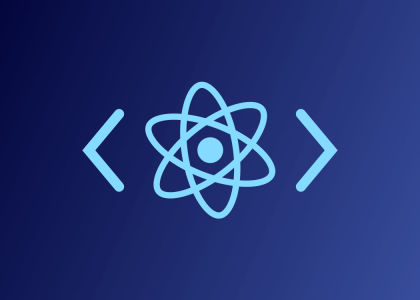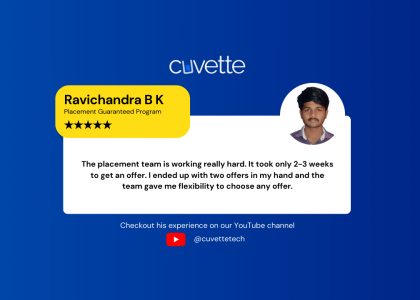If you are also looking for jobs, join our Placement Guaranteed Course designed by top IITians and Senior developers & get a Job guarantee of CTC upto 25 LPA – /placement-guarantee-program/
Adobe’s recruitment team is dedicated to matching talented individuals, like yourself, with their ideal career paths. Here’s a breakdown of what you can expect from their hiring process:
Submitting Your Application
Don’t hesitate—take the next step by submitting your application. Adobe is eager to learn more about your career goals and the impact you envision making at their company. If your skills align with their needs, they’ll reach out to you. And if the fit isn’t quite right initially, don’t worry—Adobe has numerous opportunities available.
Introductory Phone Interview
If your qualifications catch their eye, a member of Adobe’s Talent team will arrange a phone interview to delve deeper into your background and address any questions you may have. Use this opportunity to gain insights into the role, the team dynamics, and what lies ahead in the hiring process. Depending on how this conversation unfolds, you may proceed to the next stage with a Hiring Manager.
Meeting with the Hiring Manager
Scheduled for a chat with the Hiring Manager? Expect a discussion about the role’s specifics and an evaluation of your skills and enthusiasm. This is your chance to inquire about the role and team fit while assessing if it aligns with your career goals. Following the interview, anticipate further communication from Adobe’s recruiter.
Assessment
For certain roles, you may be tasked with a ‘take-home’ assignment, such as a role play, coding challenge, or writing task. These assignments offer insight into the day-to-day responsibilities of the role.
Face-to-Face Interviews
These interviews provide an opportunity for you to learn more about Adobe, particularly the broader team dynamics. They also enable Adobe to gain a deeper understanding of your professional background and capabilities.
Decision Stage
After mutual exploration, the hiring team will deliberate and reach a final decision. If you’re selected, expect to receive a verbal offer from the recruiter. If not, Adobe’s recruiter will provide constructive feedback to help you prepare for future opportunities.
Offer & Pre-Employment Checks
Upon acceptance, you’ll receive an offer letter and necessary documents. Adobe will conduct pre-employment checks, including background verification and conflict-of-interest surveys.
New Hire Onboarding
Once onboard, Adobe’s recruitment team will guide you through the onboarding process, which includes trainer-led sessions and group activities conducted virtually. Welcome to #AdobeLife!
By following this journey, you’re one step closer to joining Adobe and embarking on an exciting new chapter in your career.
List of DSA Questions Asked in Adobe Interviews:
If you are also looking for jobs, join our Placement Guaranteed Course designed by top IITians and Senior developers & get a Job guarantee of CTC upto 25 LPA – /placement-guarantee-program/
This list categorizes questions based on their primary focus and difficulty level, aiming to provide a structured approach to practicing key algorithms and data structures relevant to software development interviews.
Sorting and Searching
- Implement Quicksort
- Search Rotated Sorted Array
Linked List Operations
- Reverse a Linked List
- Find the Middle Element of a Linked List
- Merge Two Sorted Linked Lists
- Check if a Linked List is a Palindrome
- Remove a Loop from a Linked List
- Find the x-th Node from the End of a Linked List
- Flatten a Binary Tree to Linked List
Stack and Queue Implementations
- Implement a Queue using Stacks
- Implement a Stack using Queues
- Implement a Min Stack
Cache and Memory Management
- Implement an LRU Cache
Binary Tree Manipulations
- Traverse a Binary Tree in Level Order
- View the Top of a Binary Tree
- View the Right Side of a Binary Tree
- View the Left Side of a Binary Tree
- Invert a Binary Tree
- Check if a Binary Tree is a Binary Search Tree (BST)
- Insert into a Binary Search Tree (BST)
- Delete a Node in a Binary Search Tree (BST)
Graph Algorithms
- Detect a Cycle in an Undirected Graph
- Perform Depth First Search (DFS) on a Cyclic Graph
- Perform Depth First Search (DFS) on an Acyclic Graph
Recursion and Backtracking
- Generate Parentheses
- Combinations
- Combination Sum I
Mathematical Computations
- Find the Greatest Common Divisor
- Decode Ways (similar to Climbing Stairs with variations)
- Calculate Roman Numeral to Integer and Integer to Roman Numeral
String Manipulations
- Find Anagrams
- Search for a Substring (Substring Search – I)
- Reverse Words in a String
Dynamic Programming
- Count Inversions in an Array
- Longest Palindromic Substring
- Palindrome Partitioning II
- Insert Minimum Characters to Form a Palindrome
Hard Level Challenges
- Solve the Four Sum Problem
- Solve the Matrix Paths Challenge
List of Technical Questions Asked in Adobe Interviews:
If you are also looking for jobs, join our Placement Guaranteed Course designed by top IITians and Senior developers & get a Job guarantee of CTC upto 25 LPA – /placement-guarantee-program/
Programming Concepts and C++ Specifics
- C++ Shorthands: Discuss the role and examples of C++ shorthands.
- Conditional Operators and Loops: Define conditional operators and explain exit-controlled loops.
- Function Prototypes: Describe different styles of function prototypes in C++.
- Memory Management: Explain the differences between
new()andmalloc(), and between call by pointer and by reference. Discusscalloc(). - Error Handling: How to detect errors within constructors and destructors in C++.
- Virtual Functions: Define pure virtual functions and their use in C++.
- C++ Updates: Discuss the latest updates in C++ and what C++11 entails.
- Function Execution: If given a function name at runtime, how would you invoke it?
Operating Systems and Networking
- Operating System Basics: Define an operating system and explain concepts like synchronization, mutex, and the reader-writer problem.
- Memory and Stack Management: Discuss how stack operates in function calls, scenarios leading to stack overflow, and remedies. When should structures be passed by values or by references?
- Networking Protocols: Explain the working of DNS and ARP protocols. Describe the layers in the TCP/IP model and associated protocols.
- Thread Management: When a function is called in a thread, what variables can be accessed? Discuss stack versus heap variables.
Software Design and Miscellaneous Questions
- Unique String Extraction: Write a code to print all unique words from a string containing repeated words.
- Mislabeled Jars Problem: Solve the three mislabeled jars problem.
- Cache Implementation: What is the best data structure and algorithm to implement a cache?
- Accessors Explanation: Explain accessors in simple terms.
- Use of Pointers: Discuss the role of pointers in programming.
- Virtual Machines: Explain the term virtual machine.
- API Usage: How can one application use the same API provided by different vendors simultaneously?
List of HR Questions asked in Adobe Interviews:
If you are also looking for jobs, join our Placement Guaranteed Course designed by top IITians and Senior developers & get a Job guarantee of CTC upto 25 LPA – /placement-guarantee-program/
This list provides a comprehensive guide to potential HR interview questions, focusing on a candidate’s background, skills, career objectives, and personal insights, which are critical in assessing their suitability for a role.
Personal Introduction and Background
- Self-Introduction: Tell us something about yourself that is not on your resume.
- Personal Reflections: Why did you choose this career and when did you decide on this career path?
Career Aspirations and Objectives
- Future Vision: What are your future plans? Can you describe your ideal job?
- Short and Long-Term Goals: What are your short-term goals and long-range objectives? Where do you see yourself in five, and ten years from now?
Skills and Contributions
- Strengths and Weaknesses: What are your greatest strengths and weaknesses? How do you plan to overcome your weaknesses?
- Unique Qualities: What unique and different quality do you possess that makes you a more desirable candidate for this company?
- Contributions to the Company: How can you contribute to this company?
- Management Style: If you were a manager, what kind of a manager would you be?
Work Experience and Performance
- Handling Pressure and Conflict: Do you handle pressure and conflict well?
- Academic Performance: Given your IIT rank and AIEEE rank, why did you choose this particular college? You are not among the toppers; where do you stand in your class, and what is the reason for your performance?
Motivation and Values
- Reasons for Applying: Why do you want to work at Adobe?
- Value Prioritization: What is more important to you – money or job profile?
Challenges and Problem-Solving
- Recent Challenges: What major problem have you had to deal with recently?
- Unique Scenario Question: A frog starts climbing a 30-ft wall. Each hour he climbs 3 ft and slips back 2. How many days does it take him to reach the top and get out?
Miscellaneous
- Extracurricular Activities: Why don’t you have much extracurricular activity?
- Personality Insight: If you could be any animal, what would it be and why?
Compensation Expectations
- Salary Expectations: How much salary do you expect?
If you are also looking for jobs, join our Placement Guaranteed Course designed by top IITians and Senior developers & get a Job guarantee of CTC upto 25 LPA – /placement-guarantee-program/






Recent Comments